The interview is our primary tool for gathering information in research (and making hiring decisions.) It's easy enough to discuss what we plan to get from an interview and what we saw. It’s not so easy to see or describe how we move through the interview itself.
In the last few months, Lisa Koeman and I have discussed building a conceptual view of interviews for teaching and reflecting on the craft. We’re thinking out loud in two pieces that look at interviewing organically (right here) and systematically (on Lisa’s blog.)
Interviews and anthills
Navigating an interview is like navigating an anthill. Better yet, like navigating the complex underground structure an ant colony creates, inspired by Walter Tschinkel's ant architecture casting.
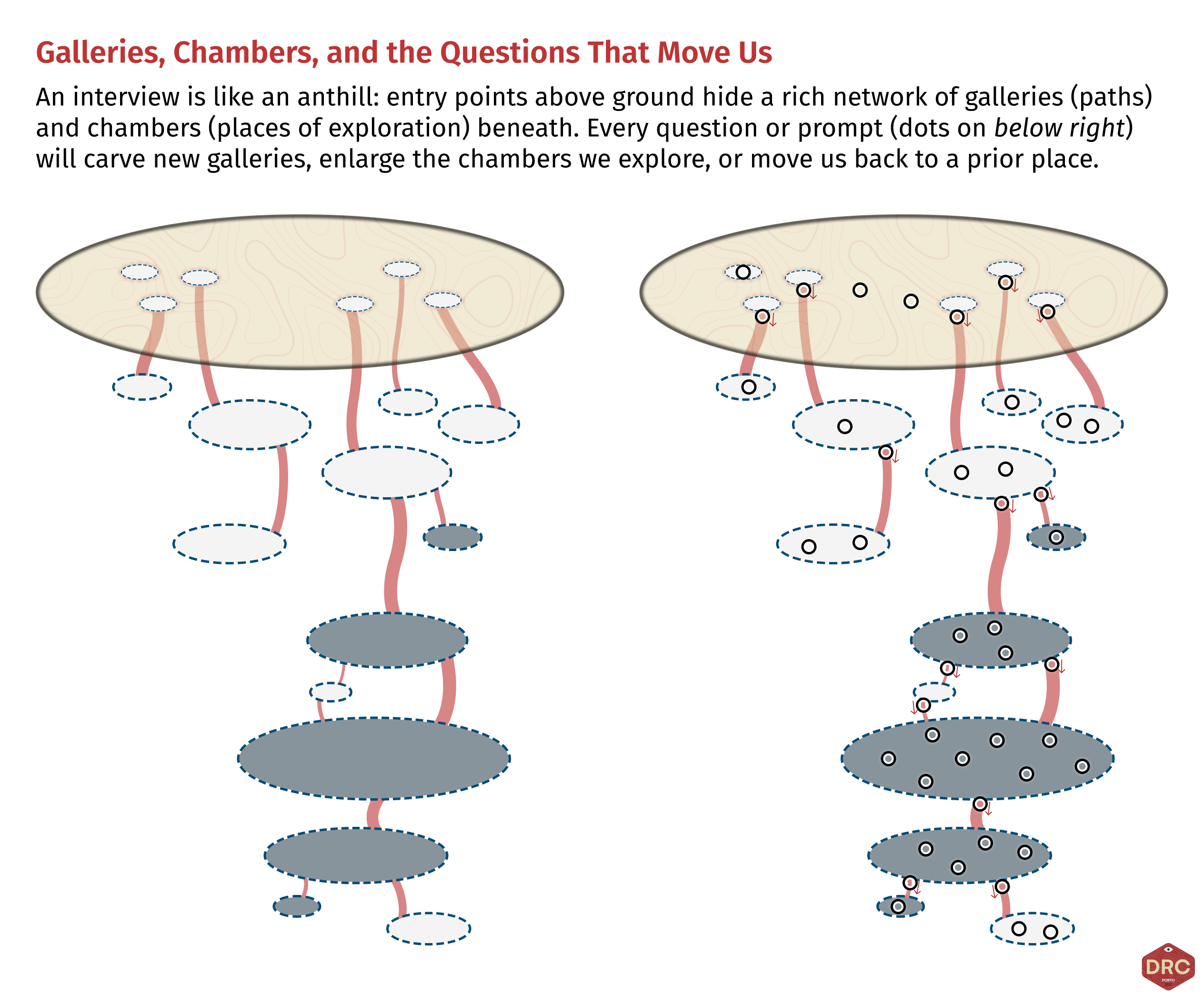
In the anthill, what appears to be a straightforward and undifferentiated surface reveals a rich and complex structure underground: sprawling, winding, unique. It's just the same for every interview we undertake. Thankfully, the structure of an interview is revealed through conversation — not an influx of molten metal.
This metaphor is rich. We can speak about directionality, depth, and surface levels as we describe interviews. We can equate the time and energy spent in a given part of the conversation with the size and nature of a given chamber. We can investigate where shafts and tunnels and galleries lead. And we can see that questions are the primary means of navigating from the surface down into the previously invisible.
Questions as collaborative navigation
This metaphor of interview-as-anthill requires a vehicle. We need a means of movement to uncover and explore possibilities in the structure before us. Questions are the key. The entire structure that unfolds before us is a function of what we ask, when, and how we ask it.
Simple and straightforward questions do the best work. Even so, the best-placed question may not be interpreted as we expect. We are visitors to this territory. We rely on the local guide — our interviewee, its prime authority — to show us what is important, what is true, or what they think we want to hear.
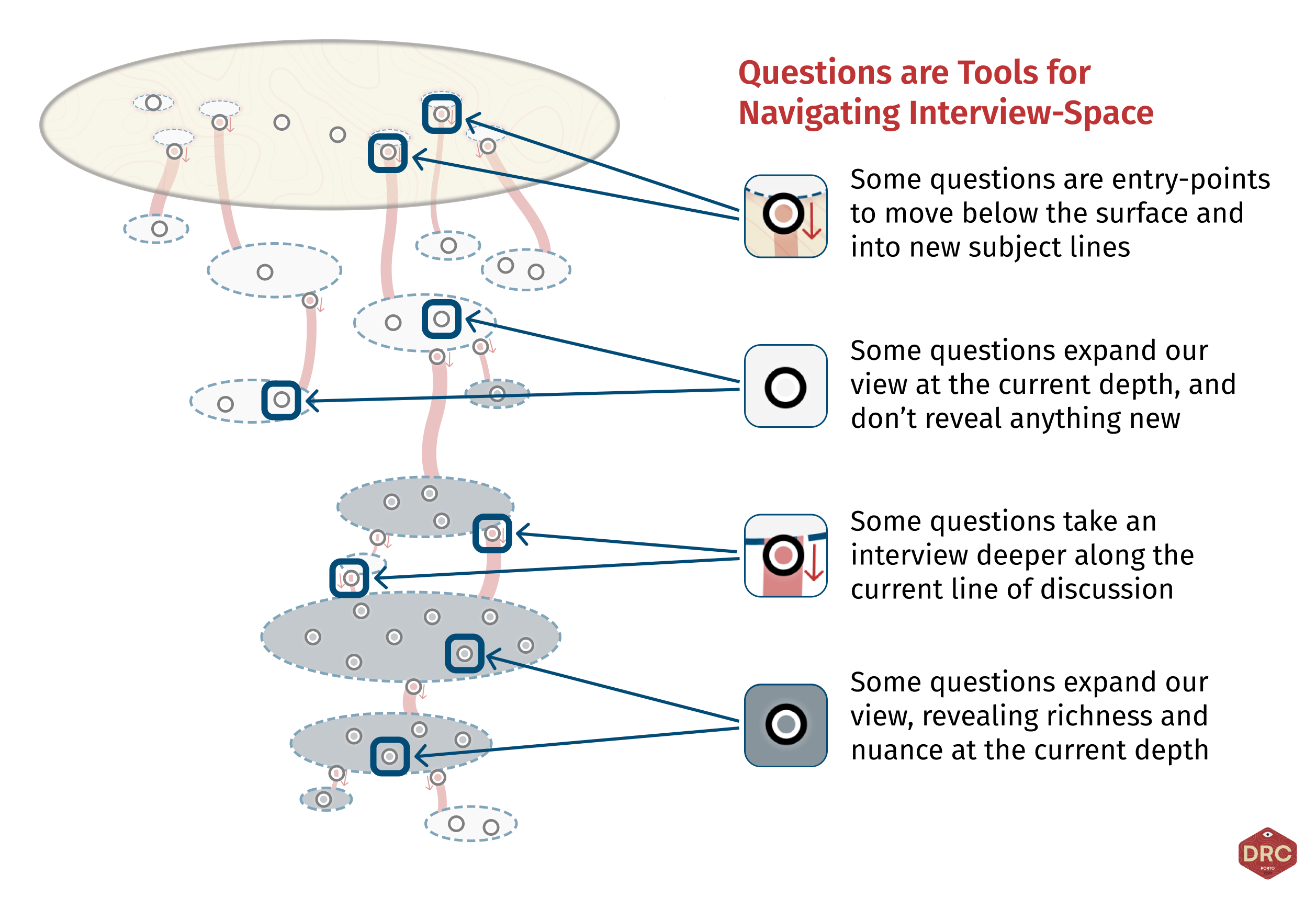
Every question, prompt, and gesture has an intent that relates to motion through interview space. It may be an invitation to explore somewhere new, a suggestion to move deeper down the current path, or an offer to stay right where we are a while longer.
Imagine the interviewer and the interviewee sharing a vehicle to navigate this anthill. As interviewers, we sit in the passenger seat. All we can do is suggest where to go next, with prompts and questions. All that we see, outside of contextual observation and field interviews, is what the interviewee decides to show us.
Progressing through an interview
Each major theme we begin with, moving from the surface downward, represents a subject or a topic line. In our anthills, topic-space is represented by side-to-side motion, primarily bounded by our interview guide (our planned entrypoints up top) and our intent to explore.
Finding that topic at the right granularity on the right level of depth is not a linear pursuit. First, we gather context, build trust and shared understanding. Then we can move deeper, find the subjects and subtopics that resonate with our interviewee, and triangulate our way down to the right chambers of conversation.
If we knew exactly what we needed to uncover and how to get there, we wouldn't need an interview — we could run a survey. (That middle ground between the poles of rich interview vs. sterile survey is where AI-moderated research tools like Outset are starting to play: it will be interesting to see how this technological wedge unfolds into research practice.)
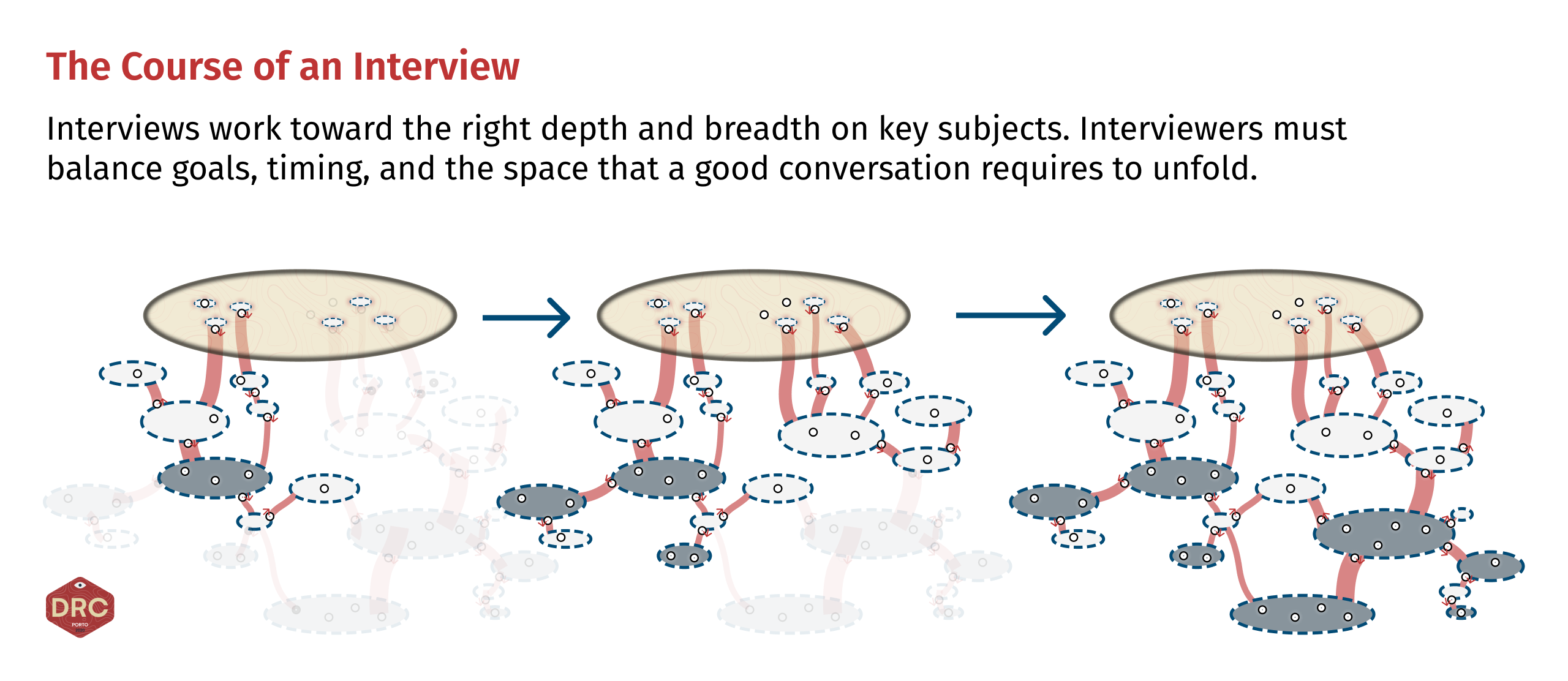
Depth itself is not our goal: we're looking for understanding, clarity, and insight. Breadth helps us understand if we're really in the right area.
Interviews naturally meander and take time to develop well. The topics and subjects described in our plan and how we describe the world will not match the interviewee's perspective. Over time, as the interviewer and interviewee reach a shared understanding, it becomes more apparent where it's safe to delve deeper. We start to sense when and how to make the right lateral move, and feel when the pathways we'd bypassed before come alive with new possibility.
The strata of interview space
There's another useful angle to our anthill metaphor of interviewing. Not the galleries and chambers themselves, but the earth that they tunnel and move through.
Ants break ground, dig into topsoil, excavate stable subsoil, and face their limits when they reach the mother bedrock. Interviewers, too, move through strata of interview-space, with similar characteristics. With practice, they develop a feel for these different strata, learning to sense what layer the conversation inhabits, and where the thresholds lie for each interviewee.
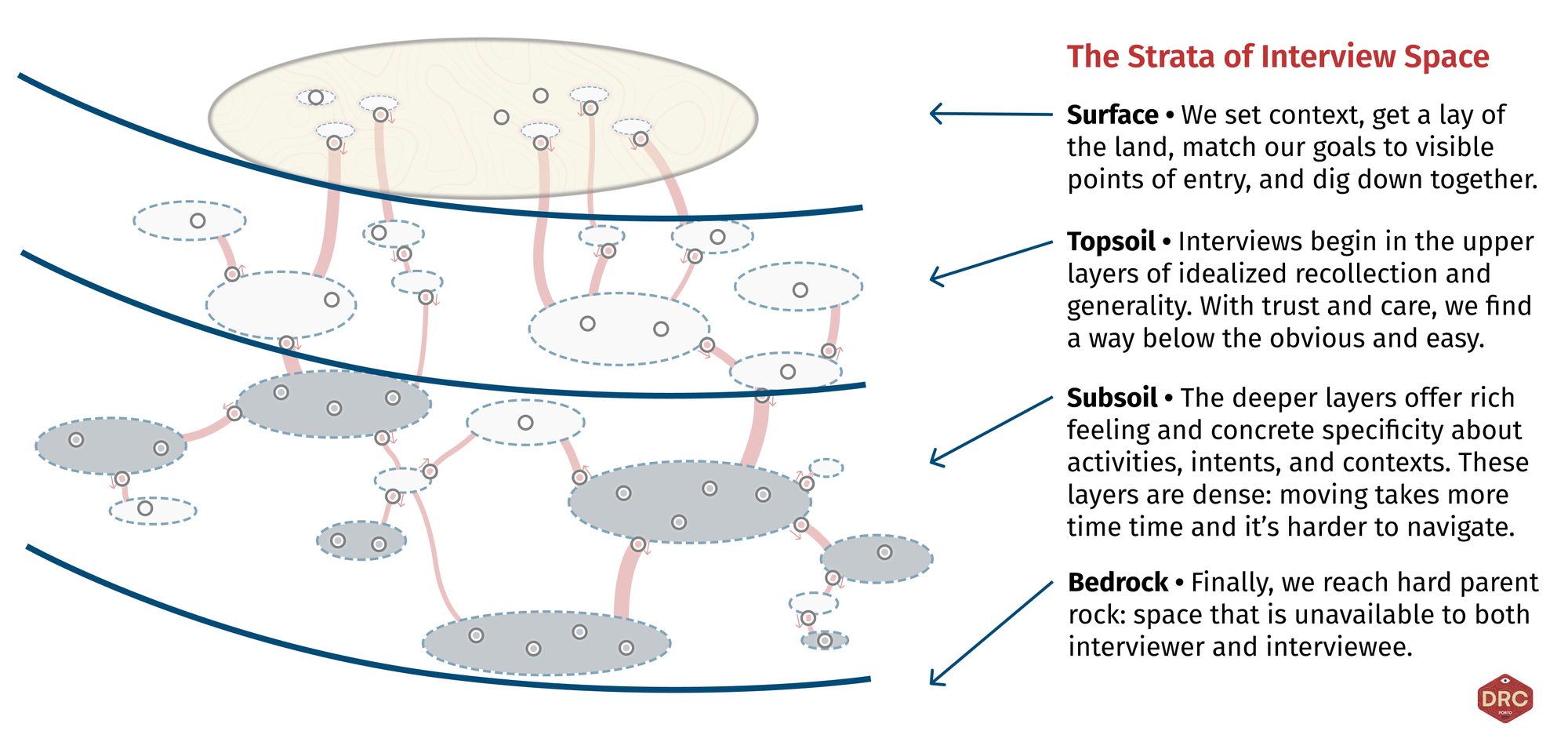
There are loose, awkward, and general answers closer to the surface. There's density, texture, and concrete richness at the lower levels. There's also a point at which, however much we desire to go deeper, neither the interviewer nor the interviewee can go any further.
Understanding beyond the bedrock is why researchers run interviews in series. Exploring and making sense of multiple interviews of different shapes is how we convert information into useful knowledge, synthesize patterns of activity, and piece together new ways of understanding what's really below the surface. The sum — our insight and output — is much greater than any of the individual parts, so long as each part has been well-shaped.
Similar structures and unique expressions
Navigating an interview is like navigating an anthill. And just like any colony's nest, the same set of guiding genetic principles (interview goals) and the same patterns of activity (interview script and technique) will generate a unique shape, every time we take on a new interview.
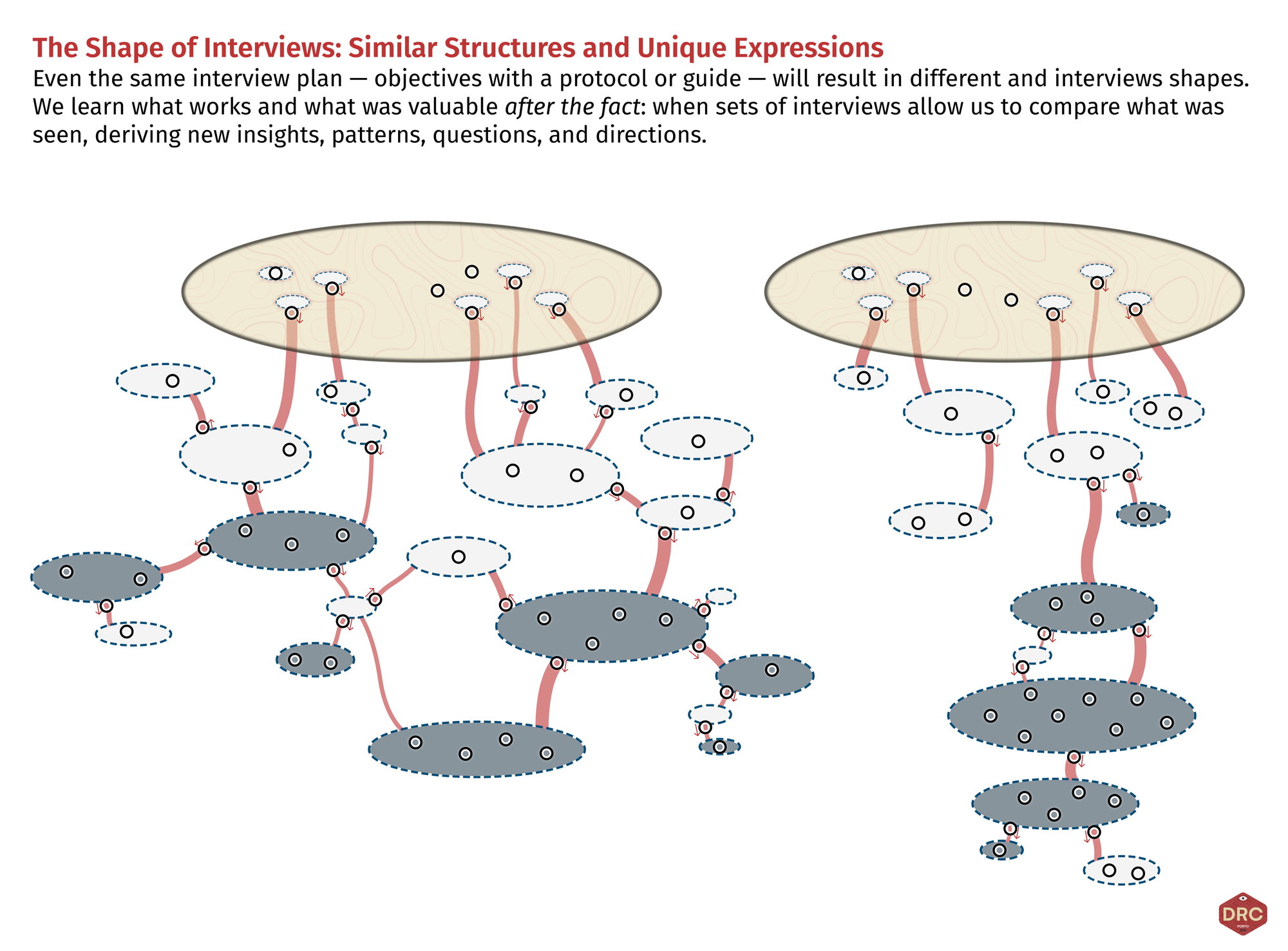
Ants make anthills, interviews explore and unfold an interview space. This is what happens when one person speaks to another, with intent to interview.
We can't predict the shape that a conversation will take. We can come to know the forces that will shape it, and the means of movement at our disposal. We can learn to navigate our interviews more effectively, and move through interview space with a more practiced ease.
An important step, we think, is having a good way to see what we're really doing.
On anthills and color systems
This exploration is part of an ongoing discussion with Lisa Koeman. As we developed our models, and I shared the piece above, Lisa offered the following thoughts:
Lisa Koeman: In our discussions you brought up the idea of showing that achieving depth in interviews takes effort, for example by showing that gravity or buoyancy could easily take you back to the surface. It feels like the anthill analogy successfully captures that: it highlights the collective effort required to dig the galleries and chambers.
The organic shape of the anthill communicates that conversations expand and contract in different ways. It’s much more natural than my structured – somewhat mechanical – depiction of interviews, but also more enigmatic: it doesn’t reveal as much about how you might navigate from the surface to the deeper chambers.
I’m fascinated by the idea of synthesis consisting of comparing and contrasting a series of anthill-shaped interviews, and curious about the lessons you’d draw from particularly narrow or wide interviews.
Read Lisa's post reframing interviews with a color system metaphor.



